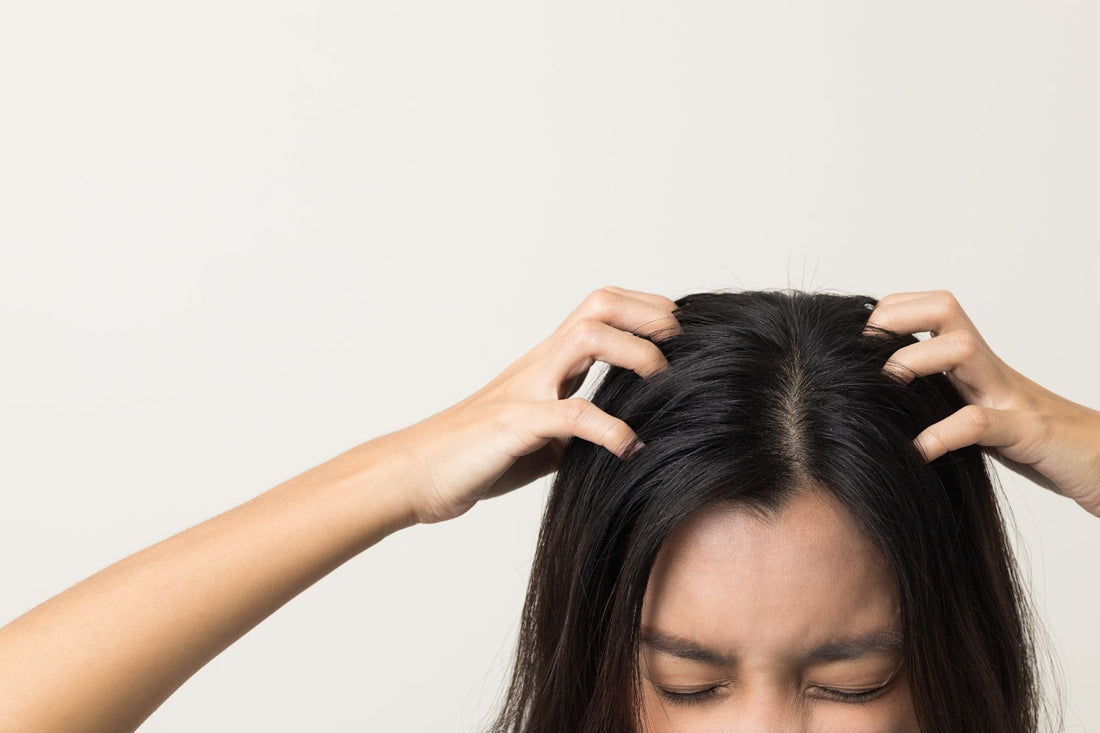You might find that you scratch your scalp without realizing it. Is it out of habit? Is it stress? Whatever it is, you’re not alone. This can be a symptom of a lesser-known condition known as Dermatillomania.
Falling under the umbrella of Body-Focused Repetitive Behaviors (BFRBs), dermatillomania is characterized by repetitive and often subconscious picking, scratching, or rubbing of the scalp.
What is Dermatillomania Scalp?
Dermatillomania scalp, characterized by compulsive picking of the scalp, is a subcategory of dermatillomania, which is also called skin-picking disorder (SPD). When dealing with dermatillomania scalp, an individual can't resist the urge to scratch, pick, or peel the skin off their scalp, leading to noticeable damage and, occasionally, serious complications.
- Symptoms: Symptoms range from mild to severe and include irresistible urges to pick at the scalp, recurring skin picking resulting in skin lesions, and repeated attempts to quit the habit. Dermatillomania scalp can, at times, lead to significant distress, impacting social, work, or other crucial areas of an individual's life.
- Triggers: The triggers for dermatillomania scalp picking can vary from person to person. Common ones include feelings of anxiety or boredom, certain physical sensations in the scalp, or even specific environments.
- Impact: The impacts of compulsive scalp picking encompass both physical and psychological aspects. Apart from the apparent hair loss and skin damage, individuals often grapple with feelings of guilt, shame, embarrassment, or personal failure, which contribute to cycles of stress and anxiety.
To underline the gravity of the issue, studies have revealed that dermatillomania affects around 1.4% to 5.4% of people at some point throughout their lifetime. These numbers are likely underestimated due to the clandestine nature of the disorder, making it high time we intensify focus on raising awareness and understanding of dermatillomania scalp.
Dermatillomania and Scalp Hair Loss
Dermatillomania can, unfortunately, have an unwelcome side-effect: hair loss. But how does this happen? Let's break it down:
- Scalp Damage: Prolonged and intense picking at the scalp can cause physical damage to hair follicles. Over time, this can weaken them, potentially leading to hair loss.
- Impaired Hair Growth: Scalp picking may interrupt the regular growth cycle of your hair. After prolonged damage, some hair follicles might completely stop producing new hair.
- Infections: Compulsive scalp picking can also lead to cuts and open wounds. These wounds can become infected, further damaging hair follicles and potentially resulting in hair loss.
It's crucial to remember that while frequent scalp picking can lead to hair loss, the degree and permanence of the hair loss differs from person to person. Some individuals experience temporary hair thinning, while others might face more permanent hair loss over time.
Though the prospect of hair loss can be daunting, understanding that a link exists between compulsive scalp picking and hair fall is the first step in managing the potential impact of Dermatillomania Scalp on your hair health.
An Insight into the Causes of Dermatillomania Compulsive Scalp Picking
One predominant trigger of this condition is stress. Compulsive scalp picking often serves as a coping mechanism for difficult feelings or strains.
There are a variety of factors that may motivate someone to take part in this habit. Here are the most common ones:
- Emotional or mental health issues: These may include anxiety, depression, and obsessive-compulsive disorder (OCD). Engaging in scalp picking can provide temporary relief from these unpleasant feelings.
- High-stress situations: Stressful events or environments can lead to a rise in dermatillomania compulsive scalp picking. This habit functions as an automatic response to alleviate stress.
- Feelings of boredom or restlessness: In some instances, compulsion can stem from feelings of boredom or restlessness, and scalp picking can serve as an outlet for these feelings.
- Dry skin: People with dry scalp may experience itching and flakiness, leading them to engage in picking as a means of addressing the discomfort.
- Satisfaction derived from picking: There’s a certain gratification that comes with picking at the scalp. For some, the act of picking, and the relief felt afterward, can be highly satisfying.
It's important to recognize that these triggers can vary greatly from person to person. What causes one person's habit might not affect someone else the same way. Understanding your own unique triggers is a crucial component of developing effective coping strategies.
An Overview of Dermatillomania Scalp Treatments for Scalp Hair Loss
While managing dermatillomania scalp can seem daunting, there are numerous effective treatments available. Here are some standard therapies that can make a significant difference:
- Cognitive-behavioral therapy (CBT): This kind of therapy equips individuals with techniques to identify and change negative thought patterns that lead to harmful behaviors. CBT is often the first line of treatment for dermatillomania.
- Habit reversal training (HRT): HRT is a type of CBT that aims to identify triggers, raise awareness of the behavior, and replace the habit with a non-damaging one.
- Acceptance and commitment therapy (ACT): ACT encourages acceptance of these urges without acting on them and focuses on helping individuals continue with their lives despite these compulsions.
Always consult with a healthcare provider or mental health professional before beginning any new treatment. Each of these treatments has its benefits and drawbacks, and it's crucial to find the one that best suits your individual needs.
Remember, everyone’s journey is unique, and finding the right treatment may take time. Be patient with yourself and continue to seek help and support to manage this condition.
How to Stop Dermatillomania Scalp Picking
Suffering from Dermatillomania is by no means an easy journey. However, with determination, understanding, and practical strategies, it is possible to navigate this challenge and mitigate the impacts. Here are some effective approaches on how to stop dermatillomania scalp:
- Recognize your triggers and be patient with yourself: Understanding what causes your urges to pick can help you develop tactics to avoid or prepare for triggering situations. Monitor your actions and feelings leading up to picking episodes to gain insights into your unique triggers. Remember, progress doesn't happen overnight. Offer yourself grace if a moment of relapse occurs – every day is an opportunity to start fresh.
- Use replacement behaviors: When the urge to pick strikes, channel that energy into something else. Some people find fidget toys helpful, while others may benefit from simple actions like clenching their fists or touching their arm.
- Utilize barriers: Physical barriers can deter the act of scalp picking. Wearing a hat, bandana, or even a sleep mask moved up to the forehead can dissuade the hands from reaching to pick.
- Mindfulness and relaxation techniques: Practices like yoga, meditation, or deep breathing exercises can all assist in managing the stress that may incite picking behaviors.
The Impact of Support Networks in Managing Dermatillomania Scalp
Having supportive networks and a strong understanding of self are crucial in managing Dermatillomania Scalp. It's not just about overcoming an individual habit; it's about navigating a journey, and that path is often easier when you're not walking alone.
- Embrace peer support: Engage in communities with shared experiences to gain insights and feel understood. It's comforting and empowering to know you're not alone. As an example, HabitAware's Community Support offers a platform for open dialogues, guidance, and mutual understanding.
- Seek professional help: Engaging with mental health professionals provides a more structured path towards managing dermatillomania scalp. They can introduce therapies and treatments bespoke to your specific needs and progression.
- Reach out to family and friends: Remember, those who love and care for you are also part of your support network. Explain your struggle to them, help them understand how best to support you, and never underestimate the power of a shared burden.
Build Mindful Habits with Keen2
If you’re struggling with dermatillomania, or other repetitive behaviors, our Keen2 awareness bracelet can be trained to gently remind you when unwanted behaviors creep up. But that’s just one of the many layers of support we offer at HabitAware. Join our supportive community, or dive into our educational resources. You don’t have to do it alone - we’re here to help.
With the right strategies and supportive network, managing and overcoming Dermatillomania is within your reach. Remember, asking for help is not a sign of weakness, but a step towards recovery. You're not alone on this journey, and together, we can navigate the path to a healthier tomorrow.


